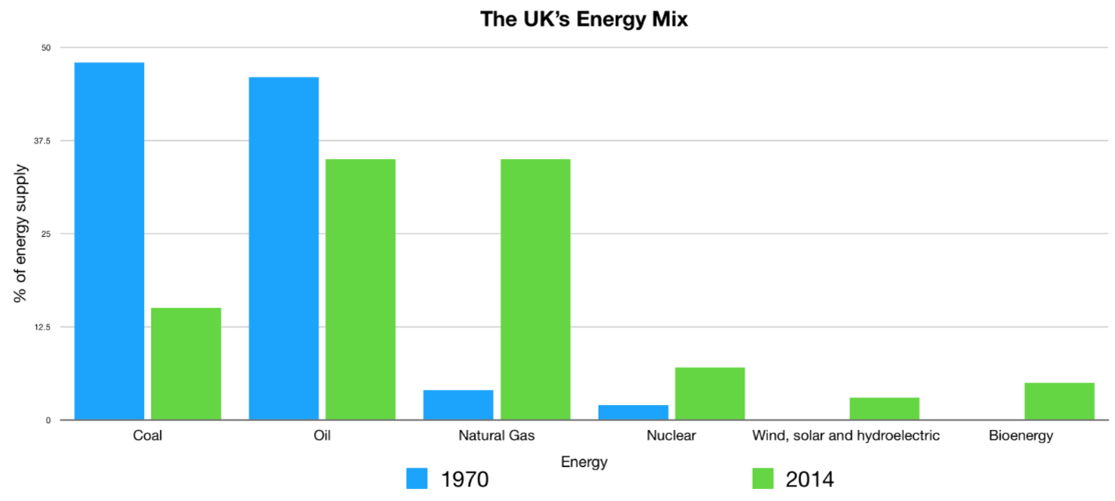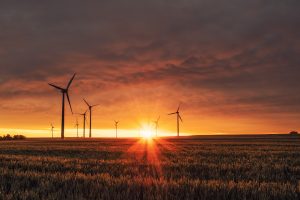Renewable energy? I’m a big fan
Arnold Schwarzenegger once said, “The future is green energy, sustainability and renewable energy” and man was he right the key driving force in everyone’s eyes at the moment is sustainability.
What do you comprise of the term renewable energy?
Renewable energy is categorised by an energy source that can be naturally replenished, typically derived from solar, wind, geothermal or hydroelectric action (Oxford Dictionary, 2021). Whereas on the other hand non-renewable is energy that exists in a finite quantity therefore cannot be replenished such as coal, oil and gas (Britannica, 2021). The society in which we live can no longer survive on our non-renewable fossil fuels as they are diminishing rapidly in quantity. Therefore, over the coming years we have seen a stark shift in energy production and energy efficiency to become more sustainable.
The 2019 trend in electricity
In 2020 the UKs Department for Business, Energy & Industrial Strategy issued a press release on the UK’s Energy Statistics for the year 2019. The key trend that was notified was that in 2019 gas accounted for 40.9% of electricity generated, whilst coal accounted for 2.1%. Interestingly, renewable electricity generation rose to 36.9% which was a record high for the UK.
Not a fossil just yet
During the 1970’s the UK produce enough energy to be self-sufficient this is evidently not the case in today’s society. 91% of energy in 1970 came from oil and coal. In 1980 22% of the UK’s energy came solely from gas due to a discovery of gas below the North Sea.
Since the early 2000’s there has been a significant decline in oil and gas production and the UK have begun to rely heavily on imported fossil fuels. All coal-fired power stations are now expected to close by 2025 and the last deep coal mine closed its doors in December 2015.
Graph 1, below, is a summary of the UK’s energy mix from 1970 to 2014. It was taken from a website called Internet Geography (How is the UK’s energy mix changing? – Internet Geography) who conducted extensive research on the UK’s change in energy. It is evident from the graph that measures are being put in place to reduce carbon dioxide emissions from burning fossil fuels by encouraging investments further afield in renewable energy resources. It can be depicted that there has been a growth in the use of renewable energy resources, however there is no comparison to the amount of non-renewable energy that we produce, and it is expected that the UK will continue to rely, to a certain degree, on fossil fuels in the near future (Internet Geography, 2021).
Graph1: The UK’s Energy Mix

The UKs electricity system is experiencing a period of significant change as they are evolving from a large-scale conventional fossil fuel dominated mix to intermittent renewable generation. Over the past few years, they have seen a considerable increase in output from wind and solar farms (Internet Geography, 2021).
The UK Government have produced a multitude of articles outlining the sources of renewable energy such as BEIS Document Template – Standard Numbering – Curve Only Cover Page Image (publishing.service.gov.uk)’ and RENEWABLES ARTICLE (publishing.service.gov.uk)’. The key points to take from the article DUKES_2020_Chapter_6.pdf (publishing.service.gov.uk) they published in 2020 were that:
- Renewable electricity generation reached an all time high in 2019 at 121 TWh (Terawatt-hour Power) this has seen an increase of 9.5% from 2018 – these have been particularly derived from offshore and onshore wind farms.
- The total renewable capacity of energy rode 6.5% between 2018 and 2019.
- Renewable sources accounted for 37.1% of the electricity generated in the UK in 2019 compared to 33.1% in 2018 (GOV.UK, 2020).
Boris’s ten-year wind farm plan
In October of 2020 Boris Johnston tweeted, “We will become the world leader in low coast, clean power generation. In ten years’ time, offshore wind will be powering every home in the country.” He is relying immensely on the production of offshore wind to allow the UK to reach their net-zero target (Edie, 2021).
The Dogger Bank windfarm is known as the biggest in the UK to date. It is located in the North Sea approximately 130km off the Yorkshire coast in England and is comprised of three 1.2GW offshore wind farms. There was $11bn invested into the three wind farms although they are expected to produce enough energy to power 4.5million homes in the UK in return accounting for 5% of the country’s total electricity demand. The production of this wind farm goes hand in hand with Boris Johnston’s 10-year plan to supply clean electricity to every home in the UK and effectively be on track to reaching their net-zero target (NS Energy, 2020).
So, in light of today’s blog, my main points to take away are:
• The UK are actively trying to reduce their carbon emissions and switch from predominantly fossil fuels to a more sustainable approach
• The production of wind farms the UK’s most projecting form of renewable energy
• The UK are on track to achieving their net-zero target
To read Natasha’s first blog, ‘2021: The Year of Positive Change?‘ just click on the link, or to read any of our other blog pieces just check out our blog section!



